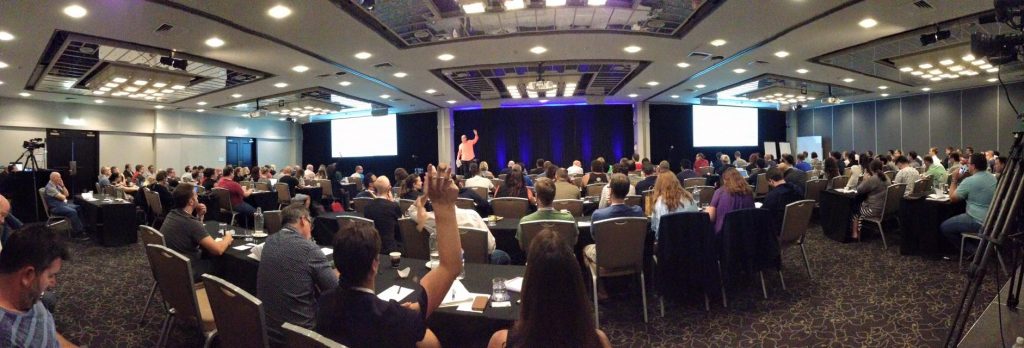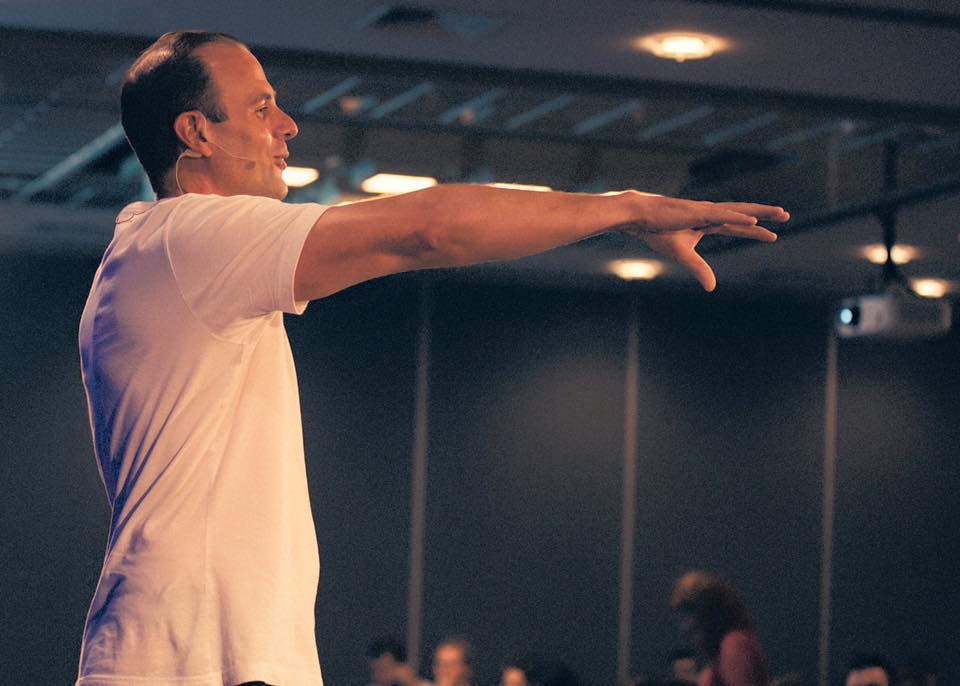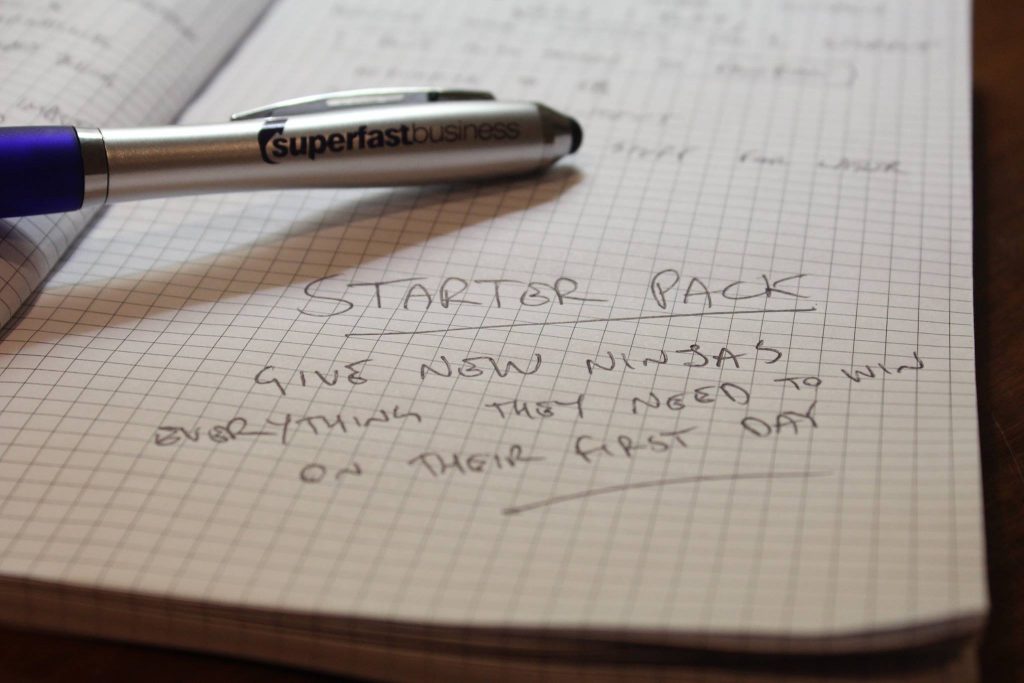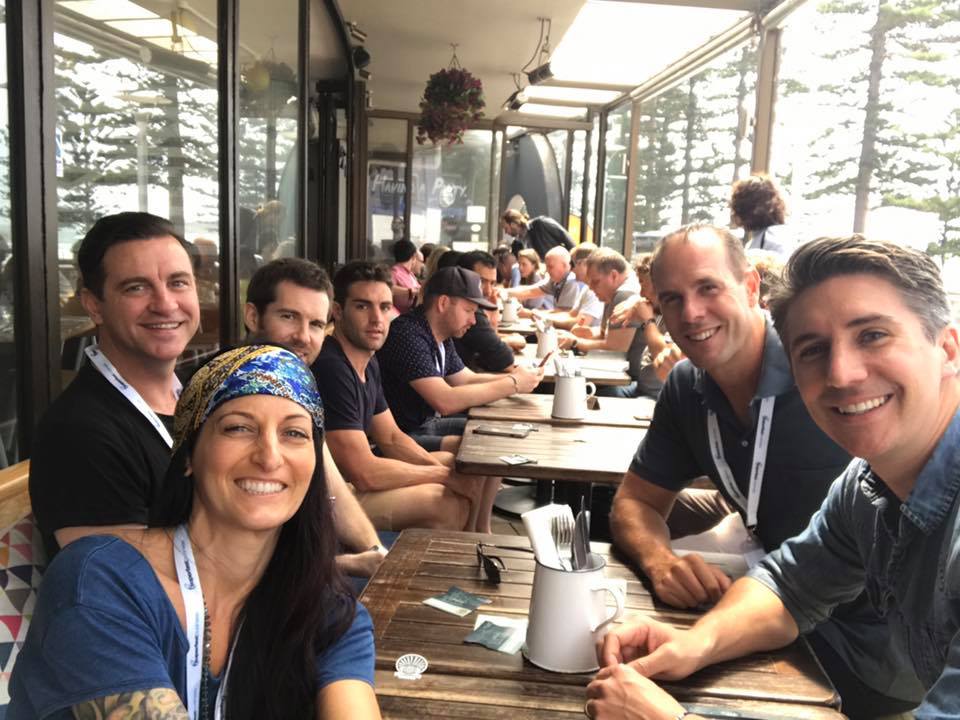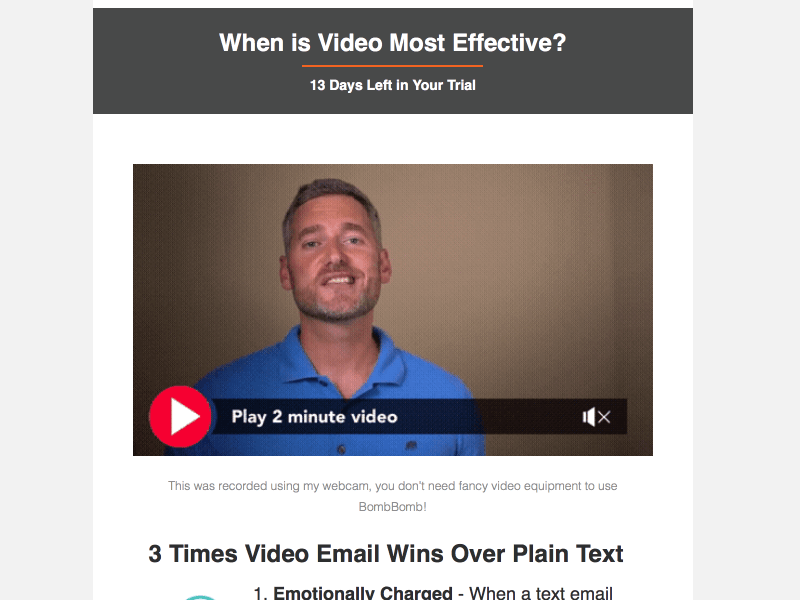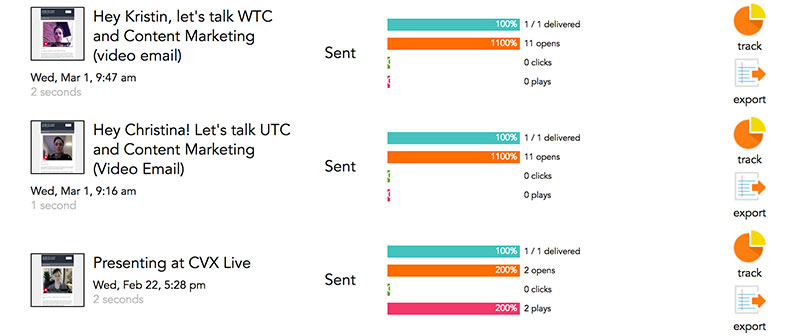Storytelling is critically important when giving a presentation, making a sale, or pitching your business idea – but how do you achieve great brand storytelling? How do you make sure that your story is compelling, that other people will connect with it? How does your story relate to your brand?
Chris Smith of The Campfire Effect teaches entrepreneurs and their teams how to powerfully tell their story so that they can increase clients, revenue and their impact on the world. He shared some of his trademarked frameworks with us, which you can use to clarify your story and tell it in a meaningful, impactful way. Smith recently gives us a detailed interview on his methodology and the key techniques needed for engaging connected brand storytelling. This post will go over the key highlights that you can take away today and apply to your own business. For an even deeper look, check out the full video:
First Things First: Story and Brand
Smith says that many clients come to him, asking how they can brand their story, but they aren’t always clear about how story and brand-related.”Your story is your brand. It’s what you speak into the world, what you become known for.”
[bctt tweet=”Your story is your brand. It’s what you speak into the world.” username=”advancereach”]
Another way to think about it is that after you speak with a client or prospect, your brand is what they remember about you. And we, as humans, always remember stories. There are three components of your brand:
- What you’re known for: What do people immediately think of when they hear your name?
- What you consciously decide to stand for: This is what you’ve decided to put out into the world. It’s the image you project and the causes you attach your name to.
- What other people say you’re known for: What is your audience going to say to a colleague about you? How will they describe you and your business?
That last idea might be a bit scary to some entrepreneurs. If my brand is what people say I’m known for, that means I’m not fully in control of my brand! That’s right. “You control that by telling your story in a powerful way,” Smith says. If you tell a compelling, unique, authentic story, people will remember and share it.
Brand vs. Branding
Before we get into details, there’s an important distinction between brand and branding. Your brand is your story, that essential, unique story that drives you and your business. “Branding is an external manifestation of your brand,” Smith explains. “It’s your logo, marketing, materials, collateral.”
Many entrepreneurs fall into the trap of mistaking their branding for their brand. They obsess over logos and collateral. They have trouble making clear decisions about how their branding should look or feel – and it’s because they haven’t addressed the internal work of understanding their brand first.
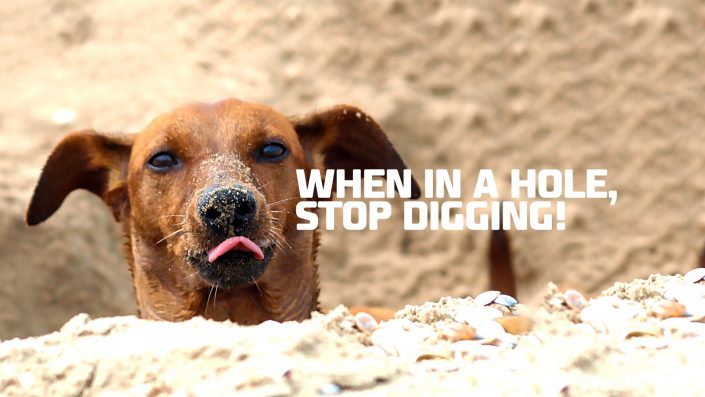
“You should at least have a high-level understanding of your brand… for your team to communicate your story consistently and effectively,” according to the experts at Branding for the People. Branding has to come out of your brand, and your brand comes from your story. Once the story is clear, you know your brand. Once the brand is clear, the branding decisions are easy.
[bctt tweet=”Once the story is clear, you know your brand. Then, branding decisions are easy.” username=”advancereach”]
The Importance of Storytelling
Okay, so understanding your story will help you understand your brand. But what does great brand storytelling do?
The truth is, great brand storytelling leads to more clients, more revenue, and a bigger impact. Smith often asks his audiences, “Do people buy from people, or do people buy from companies?” Most of his audience raise their hand to say that yes, people buy from people. “So,” he asks, “How much of you is in the story of your business?” The audience goes quiet.

Leaders know intuitively that people buy from people, but then fail actually to tell their personal, unique story. We’ve written about this before – storytelling is not just a feel-good exercise, it’s a vital business growth tool.
The Five Forces of Brand Storytelling
The Campfire Effect™ is Smith’s proven storytelling methodology. He uses five forces to tell his story and to lead clients through storytelling workshops. These forces help leaders understand the storytelling process and improve their storytelling technique. They can be used as the actual structure of your story in a presentation – each force can be a few slides in your deck.
On top of that, he says, after a Five Forces workshop, clients “actually have the confidence to tell their story – because they know they have a great story.” These five forces are a powerful tool not just as a framework for telling your story, but for really understanding the impact of your brand storytelling.
The First Force: Who You Are
Telling your story starts with telling who you are. What are your roots, what connects your childhood to what you do now? Who are the important people in your life?
Smith grew up in Arizona, around ranchers and cowboy storytellers, and he always includes that when he tells people who he is. He was fascinated with storytelling, and now he teaches people how to tell their stories. This connection to his roots is part of his story, and it’s often what people first connect with when they meet him.
Or think of this story, of a father coming to understand that his son’s tattoos were his way of telling his life’s story. Both the story and the son’s means of telling it were distinctly personal, and it brought them closer together.

“Everyone has connections in their childhood and roots that connect to what they do today,” Smith says. “We have a tendency to leave it out because we don’t want to be vulnerable.”
This should be simple and genuine. It’s not a sales pitch, and you’re not trying to influence your audience. Your audience will see that you’re a real human being and interested in connecting with them. It builds trust.
Another benefit to really understanding your roots is that it builds confidence. Smith’s clients see for themselves that there are connections between their roots and what they do now, which gives them a sense of connection and purpose.
Need more inspiration for your storytelling? Check out 26 Tips For Storytelling
The Second Force: Why You Do It
The second part of brand storytelling is explaining why you do what you do. Don’t use this time to state that this work is your passion or your life’s purpose – if you tell your story right that will be clear without you ever having to say it. Instead, why you do it is external. Talk about how you saw a problem or need and knew that you could do something about it.
If you’re having trouble putting this into words, Smith has some advice. “Break it up into observations and realizations,” he says. “Observations are things that you observed that were struggles or challenges.” Those are the problems you saw in the world around you, suffering or need that you observed in other people. Then, he explains, “Realizations are the ideas you had about how you could make it better.”
This starts to plant seeds of credibility, reliability, and hope. Again, this stage is not about selling. It’s about telling your authentic story, which will demonstrate to your audience that you’re credible, outward-looking, and here to solve a problem. If they identify with the struggles you’ve described, now they know that you may be the right person to help them.
The Third Force: What You Do
“This is where most entrepreneurs get in a lot of trouble,” Smith warns. Entrepreneurs are excited about their businesses, and genuinely want to share that excitement with others. They can go on for days about what they do – whether their audience wants them to or not.
The key to getting this pillar right is to tell your audience enough to get them interested, but not so much that it turns them off. They don’t need to know every detail of your product or service. This is not the time to close the deal. It should be just enough information to build a little bit of interest. You want the person on the other end to say, “Tell me more.”
Four Filters for “What You Do”
Smith has a list of filters he likes to use, to check himself when he starts to talk about what he does. By asking these questions, he makes sure that he’s giving the right amount of information.
- Is it clear?
- Is it succinct?
- Is it thought provoking?
- What’s the benefit?
Here’s an example from his business. At The Campfire Effect, he says, “We teach entrepreneurs how to tell their brand story in a really powerful way, so they can get more clients, build a stronger culture, and make more of an impact.”
That statement is clear – it’s a simple language that anyone can understand. It’s succinct – a single sentence. It’s certainly thought-provoking, making the listener want to ask how exactly he accomplishes all of this. And it states major benefits that his clients get out of working with him.
A simple, clear statement of what you do builds interest in your audience and makes them want to engage with you to learn more.
The Fourth Force: How You Do It
Many entrepreneurs can go on for hours about what they do without ever getting to how exactly they do it. The more precise and specific you are with this, the more it instills confidence in your business – you know what you’re doing. You’ve thought this through.
Have a specific name and clearly articulated steps for your methodology.. Rather than telling people that he leads a “two-day workshop on brand storytelling,” for example, Smith explains that he has a “proprietary framework” to help companies tell their story and increase sales. He goes into the details here, listing the parts of his framework and the stages that he leads clients through – stages like these Five Forces of Storytelling.
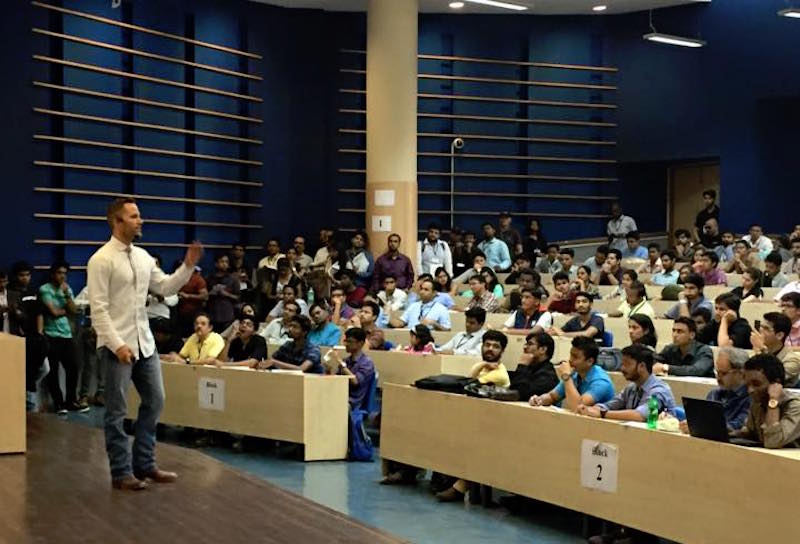
The clear articulation of your process shows that you’ve put time and thought into it. Every prospective client wants to know what they would be buying. For many people, “a two-day workshop” is simply not enough information to feel confident that they’re going to get a return on investment from working with you.
The Fifth Force: Social Proof
“The fifth force is the one that I see so many entrepreneurs use the least, and it’s the most powerful,” Smith says.
We use social proof every day to make decisions about how to spend our money and time. We look at product ratings on Amazon, we find restaurants on Yelp, and we decide to go see that movie that everyone has been talking about on Facebook.Your customers are guided by social proof in the same way, and many entrepreneurs miss the opportunity to use it.
The most powerful form of social proof you can use is telling a client’s story. Who were they? What were they struggling with? How did you approach the problem? What was the result?
[bctt tweet=”The most powerful form of social proof is telling a client’s story.” username=”advancereach”]
It’s strongest if you can talk about a client who has a lot in common with your audience – the key is knowing your audience first. If you’re in a one-on-one conversation, this means listening to the person you’re speaking to and asking good questions. Then look them in the eye and say, “You remind me of a client that we recently helped, can I tell you their story and what we did for them?”
With a broader audience, it means doing your research. Learn who is going to be there, and learn what their challenges are most likely to be. Then tell the specific, detailed ways in which you helped a similar client. Be intentional, and use this as an opportunity to reinforce “How You Do It.” Explain exactly how you walked the client through your process. This makes your process real and relatable and demonstrates the value in what you do.
One final piece of advice
This framework is useful in understanding and telling your story – which, remember is your brand. That’s important and powerful, but it’s not the most important story when you talk to a prospect or client. Their story is.
Smith uses this same framework to learn other people’s stories and asks these questions when he meets a new potential client. It builds trust, Smith says and creates an opportunity to relate your story to theirs directly. You’ve set your listener at ease by building trust, and you know exactly what form of social proof will have the greatest impact.

Remember: Your story is your brand. Everything else – the collateral, logo, and designs that you’ve been obsessing overflow naturally out of your brand and your story. Clearly articulating your story and being able to share it with an audience makes you a more powerful speaker, helps you connect with clients, and gives you the confidence and clarity to develop your branding.
Let your story bring wealth to your business and those you’ve set out to help, and let us help you with your story. Follow the steps in our Signature Talk Outline to develop your Signature Talk in a more compelling and impacting way. Download now to get started!.


